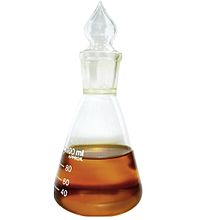
Photo from wikipedia
This study conducts a Life Cycle Assessment (LCA) of microalgae grown in laboratory scale using different mediums to produce biomass and purify the effluent organic load. Within this LCA, two… Click to show full abstract
This study conducts a Life Cycle Assessment (LCA) of microalgae grown in laboratory scale using different mediums to produce biomass and purify the effluent organic load. Within this LCA, two microalgae cultivation systems were evaluated: (1) cultivation with synthetic nutrients (CSN) and (2) cultivation with cattle manure effluent from biodigestion (CME). The comparison unit among the two culture systems was the production of 10 g of dry microalgae Scenedesmus sp. biomass through the CML 2000 method. Environmental aspects and impacts of the two systems were analyzed, showing that the CME required less water and reduced the potential for eutrophication in comparison with the CSN. Furthermore, the CME reduced all physical–chemical parameters indicating efficient purification of the effluent through microalgae cultivation, resulting in a 92.5% decrease in total nitrogen and a 51.9% decrease in phosphorus. The key conclusions were that CME is an environmentally conscious and promising technology for wastewater treatment when combined with microalgae biomass production. Although the analysis was conducted in laboratory scale, it is reasonable to project the results to a larger-scale production, provided that adequate control strategies are implemented. Follow-up studies should be conducted with microalgae cultivated in similar effluents to cattle manure (e.g., pig or chicken manure, sugar cane industry effluents and wastewater) in order to evaluate their potential for biomass production and wastewater treatment applications.
Journal Title: Clean Technologies and Environmental Policy
Year Published: 2017
Link to full text (if available)
Share on Social Media: Sign Up to like & get
recommendations!